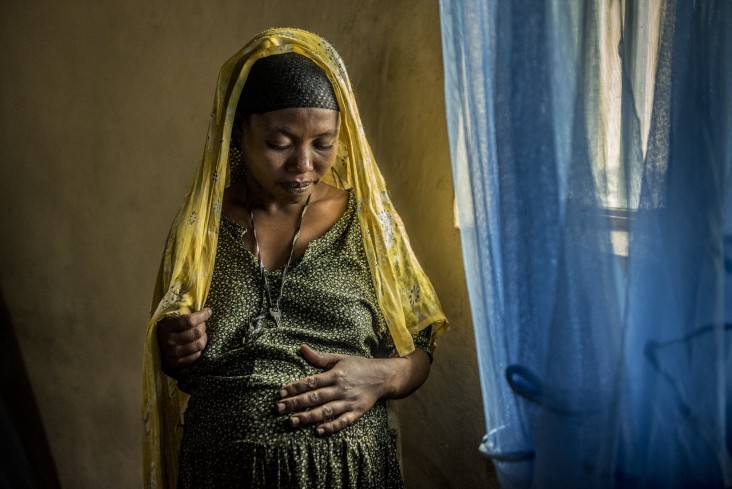- What We Do
- Agriculture and Food Security
- Democracy, Human Rights and Governance
- Economic Growth and Trade
- Education
- Environment and Global Climate Change
- Gender Equality and Women's Empowerment
- Global Health
- Humanitarian Assistance
- Transformation at USAID
- Water and Sanitation
- Working in Crises and Conflict
- U.S. Global Development Lab
Speeches Shim

When a mother dies in childbirth, her infant has only a 19 percent chance of surviving his or her first month of life.1
Globally, more than 800 women still die every day from preventable causes related to pregnancy, and 94 percent of these deaths occur in low- and middle-income countries.2 Despite the significant progress that has been made in maternal survival during the past two decades, the number of preventable maternal deaths that happen every day is a reflection of the deep inequities that remain in women’s access to health services.
In the last two decades, the number of maternal deaths per 100,000 live births has decreased by more than 50 percent in USAID’s 25 priority countries for maternal and child health.
USAID works to promote maternal health by enabling and mobilizing individuals, governments, and health facilities to advance quality, respectful, and accessible care for women and their families. Through both public and private sector partnerships, USAID works to strengthen countries’ health systems holistically, at the community and facility levels, for women of childbearing age before, during, and after pregnancy. In addition, USAID promotes innovation and research around maternal health in national policies and programs and works to scale-up high-impact, sustainable interventions.
RESOURCES
- USAID Acting on the Call: Preventing Child and Maternal Deaths
- Survive and Thrive [PDF, 7.2MB]
- Saving Lives at Birth Partnership
USAID's Impact

USAID has supported the scale up of a digital referral system for maternal health that connects 24 districts and 6 cities across Indonesia, covering 150 hospitals and 300 community health clinics.
This digital referral system saves women like Desi, who experienced a life-threatening complication during the delivery of her first child, by connecting community health centers to health facilities to notify the arrival of women needing urgent care with text messages. Learn more about Desi’s story. Photo credit: USAID EMAS Profit Syane

In Ghana, USAID contributed to a 17 percent reduction in maternal mortality and a 16.5 reduction in stillbirth rates in target districts in just one year through a quality improvement approach.
Photo credit: Kate Holt/MCSP and Jhpiego

Since 2004, USAID has worked to treat fistulas in sub-Saharan Africa and South Asia, enabling more than 54,000 fistula repair surgeries.
In Uganda, USAID facilitated the development of five fistula repair centers, which has allowed women like Justine to be free of fistula after receiving fistula repair surgery at a USAID-supported center. Watch this video to hear Justine’s story. Photo credit: Carielle Doe.

In partnership with the government of Rwanda, USAID increased the proportion of women who consumed a diverse diet by 2.5 times in supported areas in 2018.
Photo credit: Kate Holt for JHPIEGO/MCSP

From 2012 to 2018, USAID supported more than 12 million women to give birth in a health facility.
Learn more about USAID’s work to support the world’s most vulnerable women and children across 25 countries in our 2019 Acting on the Call report.
1 Nguyen DTN, Hughes S, Egger S, et al. Risk of childhood mortality associated with death of a mother in low-and-middle-income countries: a systematic review and meta-analysis. BMC Public Health. 2019;19(1):1281. Published 2019 Oct 11. doi:10.1186/s12889-019-7316-x
2 https://www.who.int/news-room/fact-sheets/detail/maternal-mortality

Comment
Make a general inquiry or suggest an improvement.